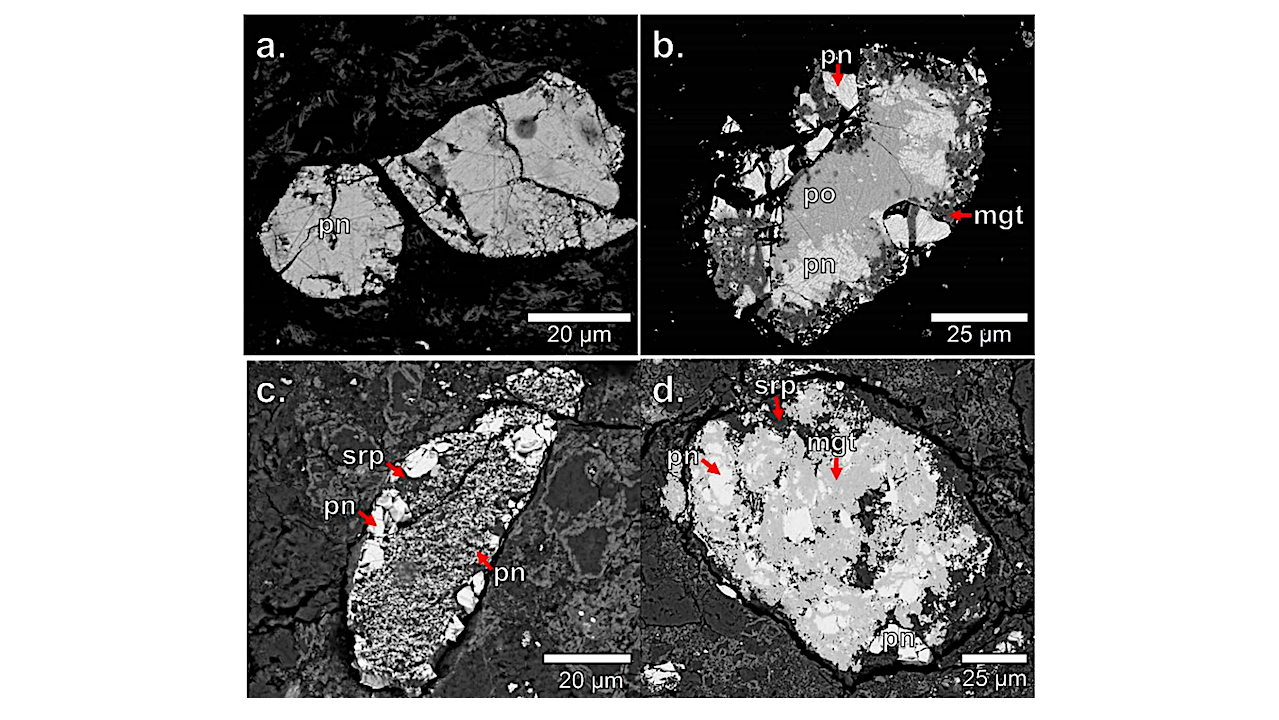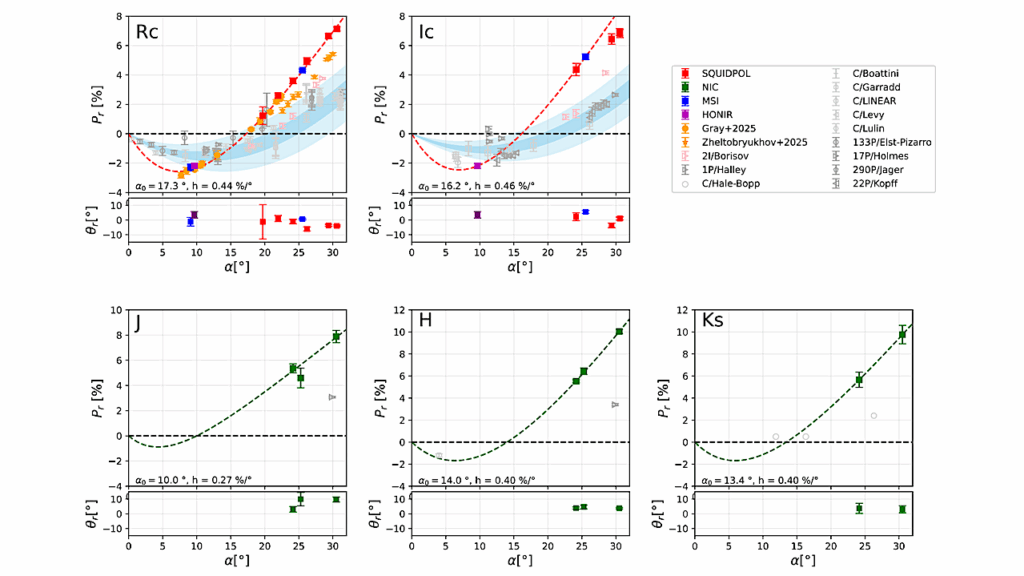The Fate of Primary Iron Sulfides in the CM1 Carbonaceous Chondrites: Effects of Advanced Aqueous Alteration on Primary Components

We have carried out a SEM-EPMA-TEM study to determine the textures and compositions of relict primary iron sulfides and their alteration products in a suite of moderately to heavily-altered CM1 carbonaceous chondrites. We observed four textural groups of altered primary iron sulfides:
1) pentlandite+phyllosilicate (2P) grains, characterized by pentlandite with submicron lenses of phyllosilicates,
2) pyrrhotite+pentlandite+magnetite (PPM) grains, characterized by pyrrhotite-pentlandite exsolution textures with magnetite veining and secondary pentlandite,
3) pentlandite+serpentine (PS) grains, characterized by relict pentlandite exsolution, serpentine, and secondary pentlandite, and 4) pyrrhotite+pentlandite+magnetite+serpentine (PPMS) grains, characterized by features of both the PPM and PS grains.
We have determined that all four groups were initially primary iron sulfides, which formed from crystallization of immiscible sulfide melts within silicate chondrules in the solar nebula. The fact that such different alteration products could result from the same precursor sulfides within even the same meteorite sample further underscores the complexity of the aqueous alteration environment for the CM chondrites.
The different alteration reactions for each textural group place constraints on the mechanisms and conditions of alteration with evidence for acidic environments, oxidizing environments, and changing fluid compositions (Ni-bearing and Si-Mg-bearing).
Sheryl A. Singerling, Catherine M. Corrigan, Adrian J. Brearley
Comments: 53 pages, 10 figures, 2 tables, appendix containing 3 additional figures and 5 additional tables
Subjects: Earth and Planetary Astrophysics (astro-ph.EP); Geophysics (physics.geo-ph)
Cite as: arXiv:2401.02932 [astro-ph.EP] (or arXiv:2401.02932v1 [astro-ph.EP] for this version)
Submission history
From: Sheryl Singerling
[v1] Fri, 5 Jan 2024 18:16:39 UTC (6,182 KB)
https://arxiv.org/abs/2401.02932
Astrobiology, Astrochemistry,








